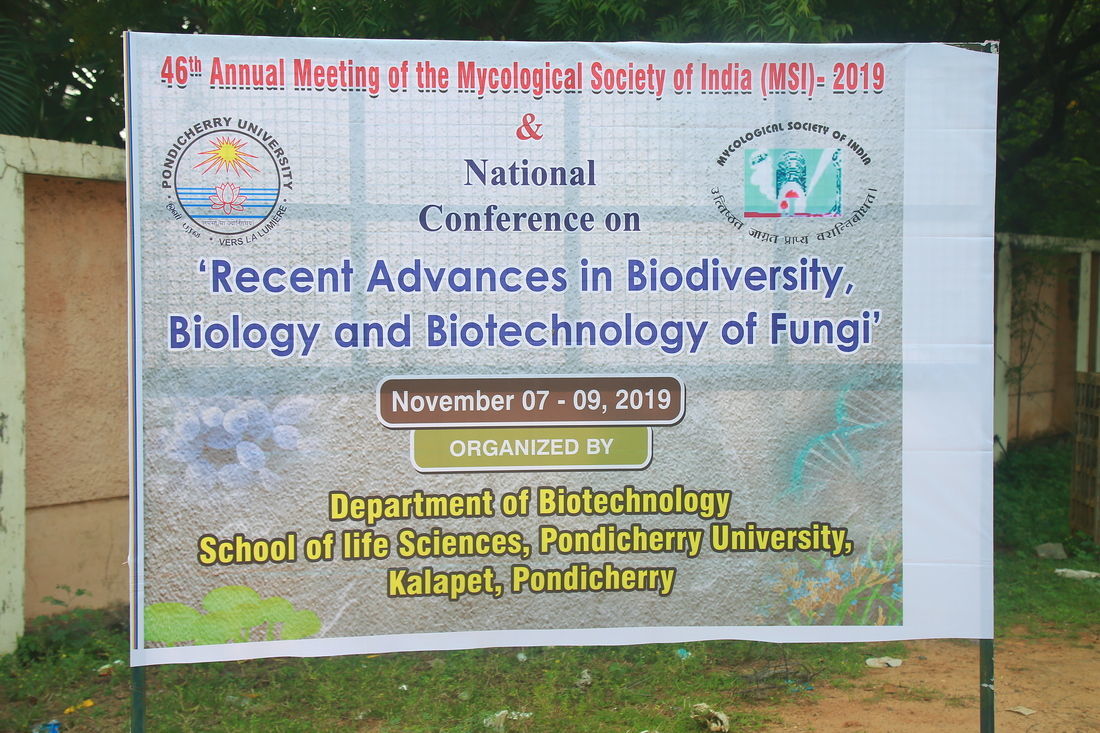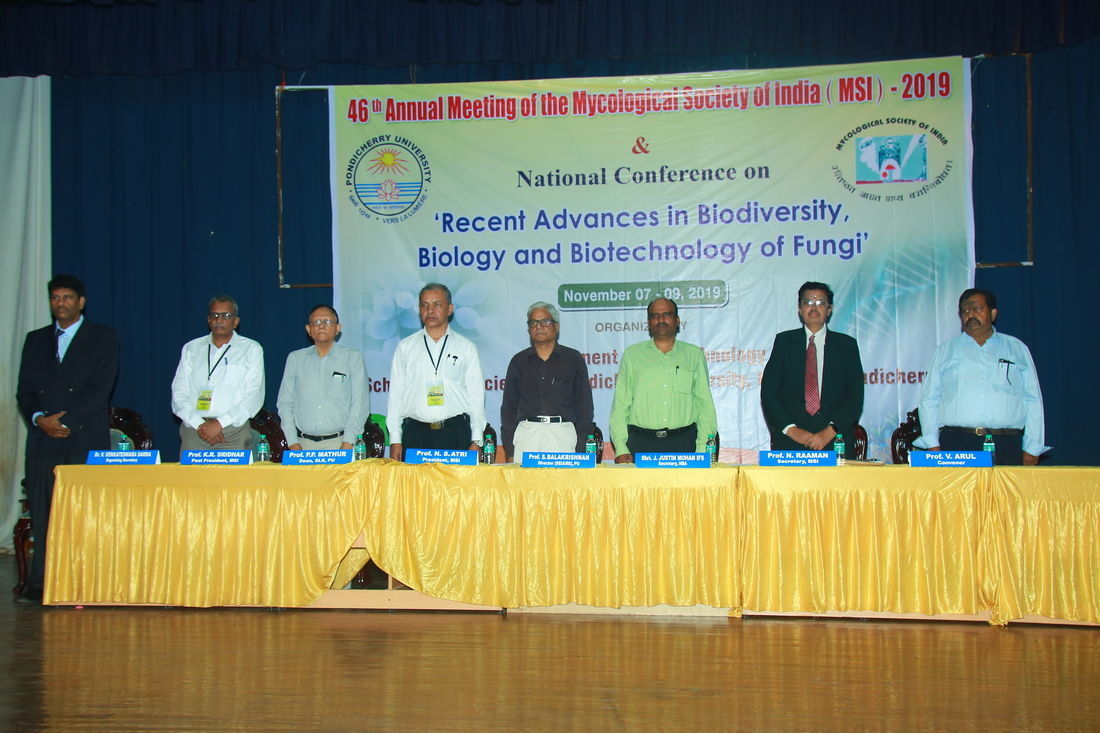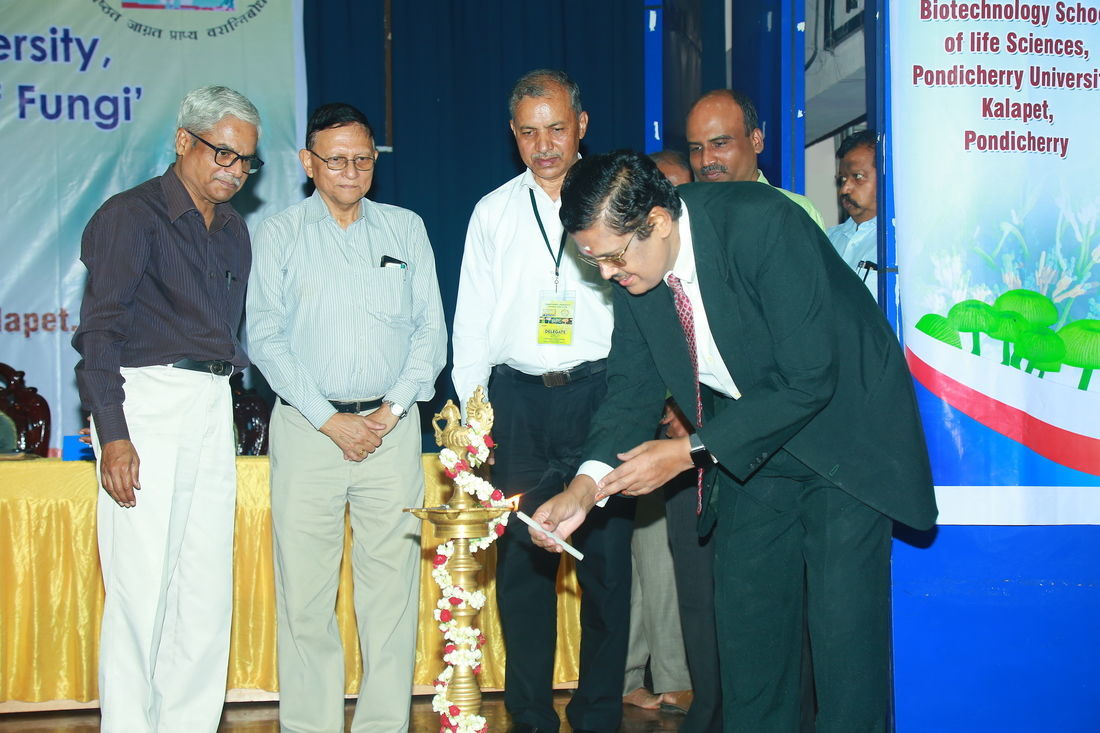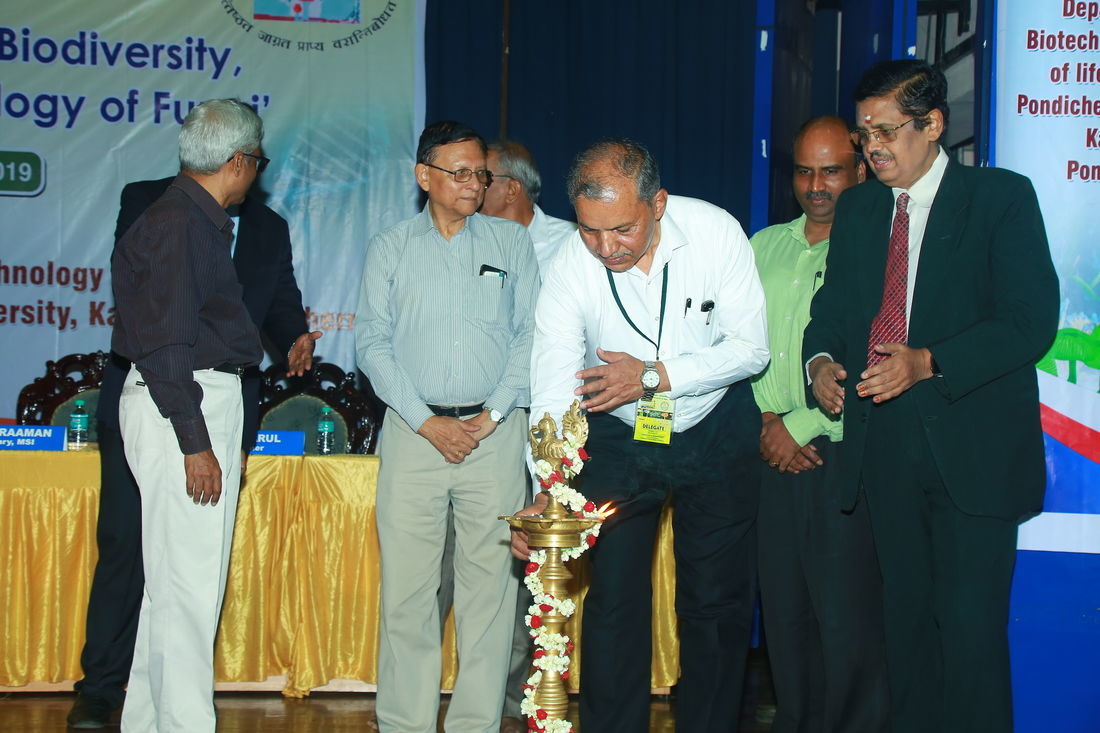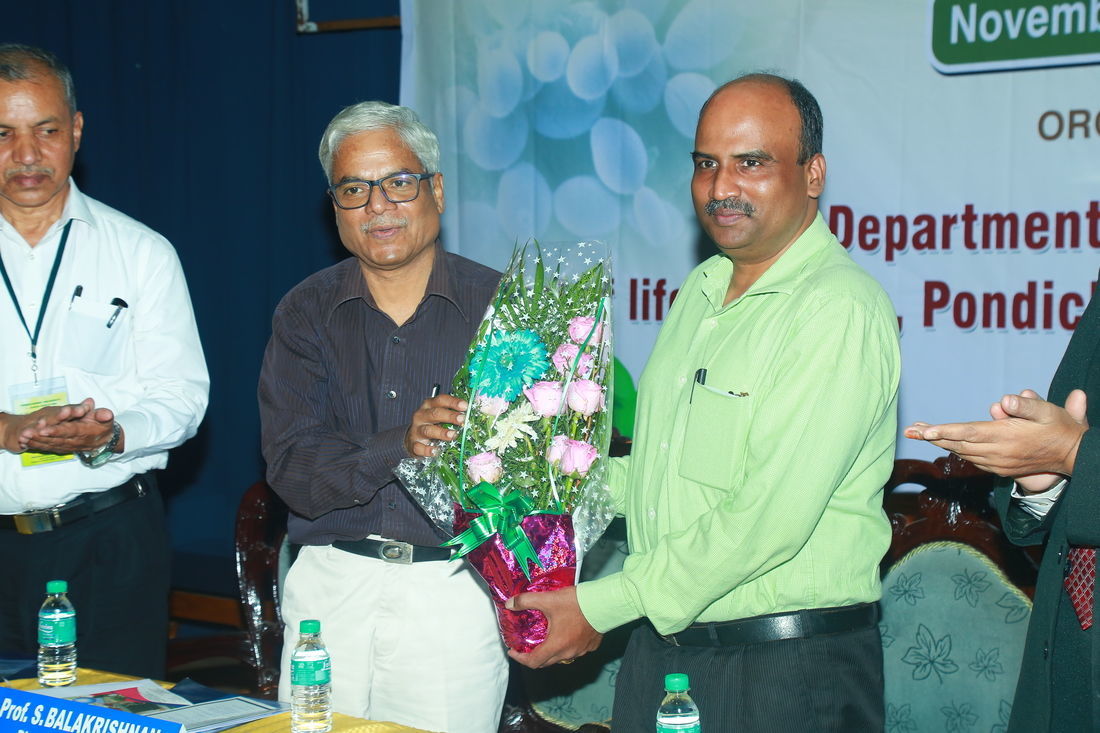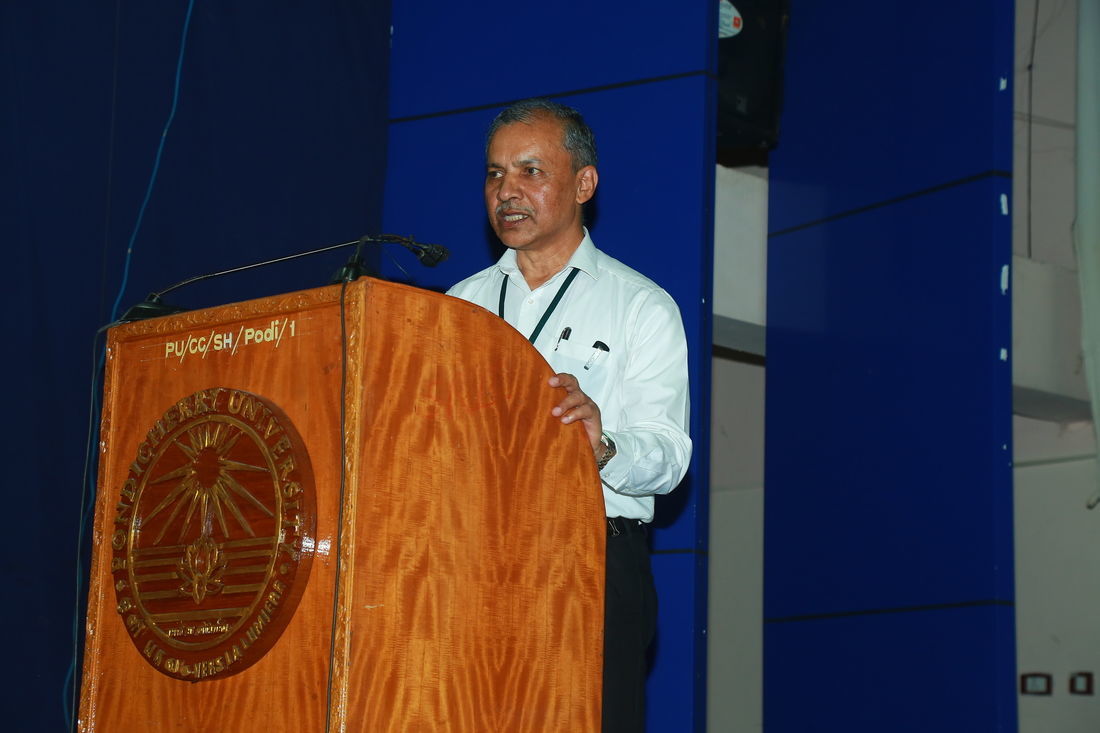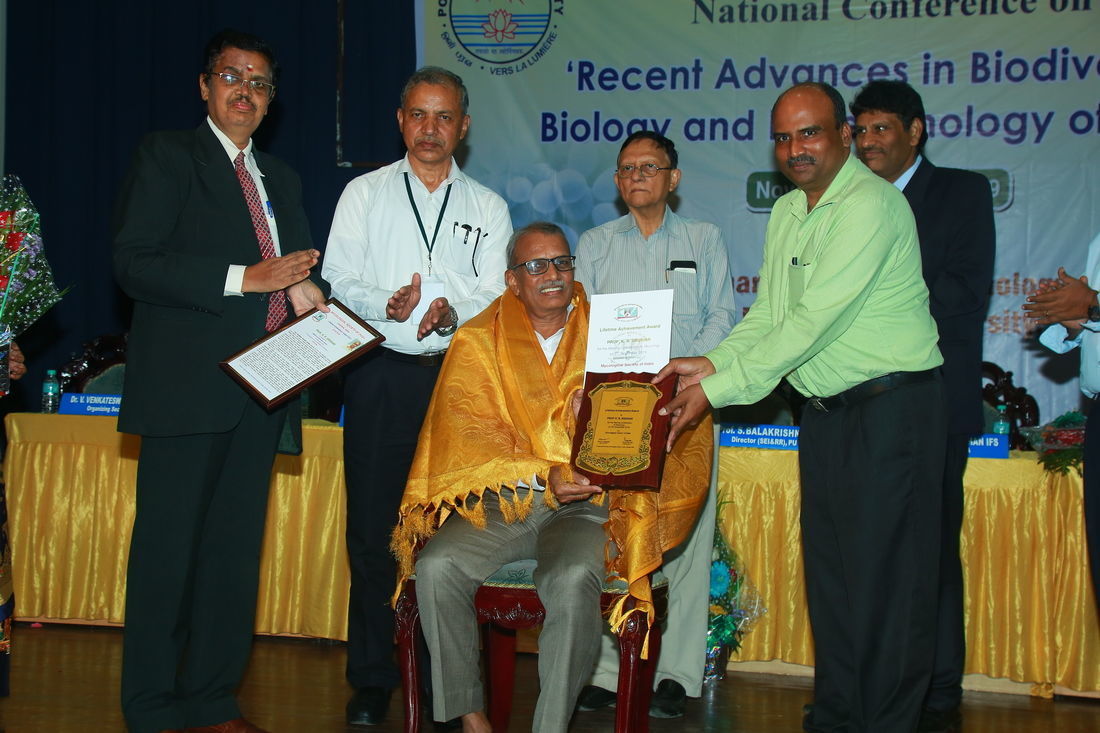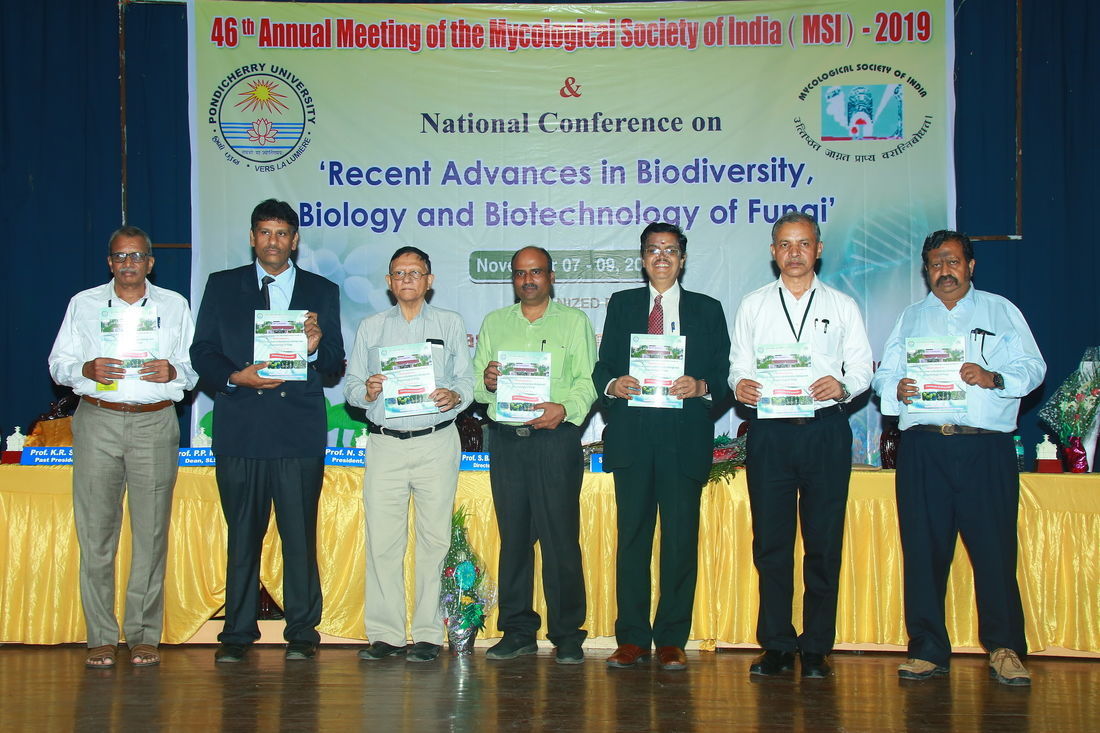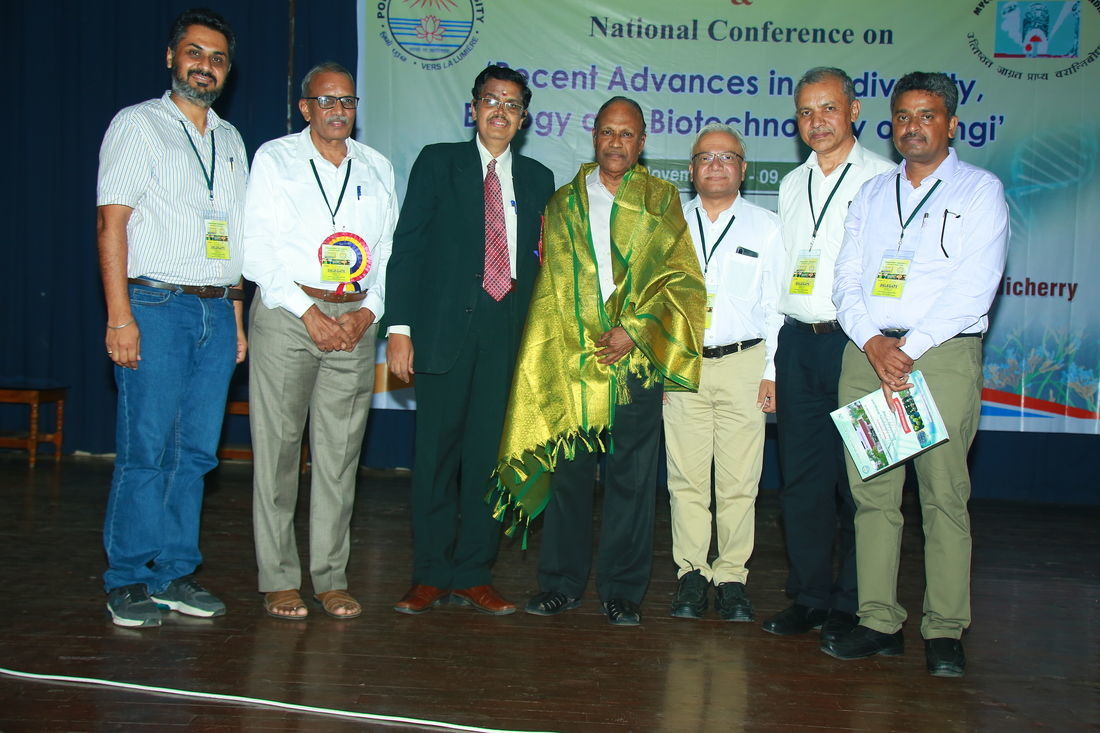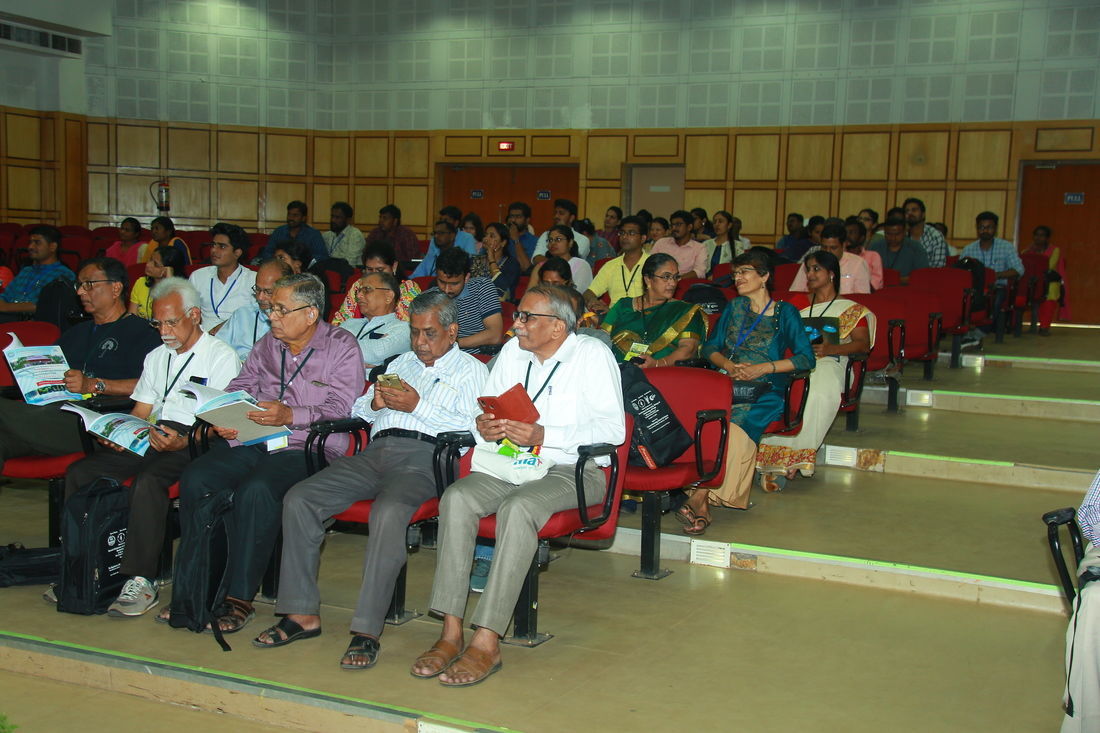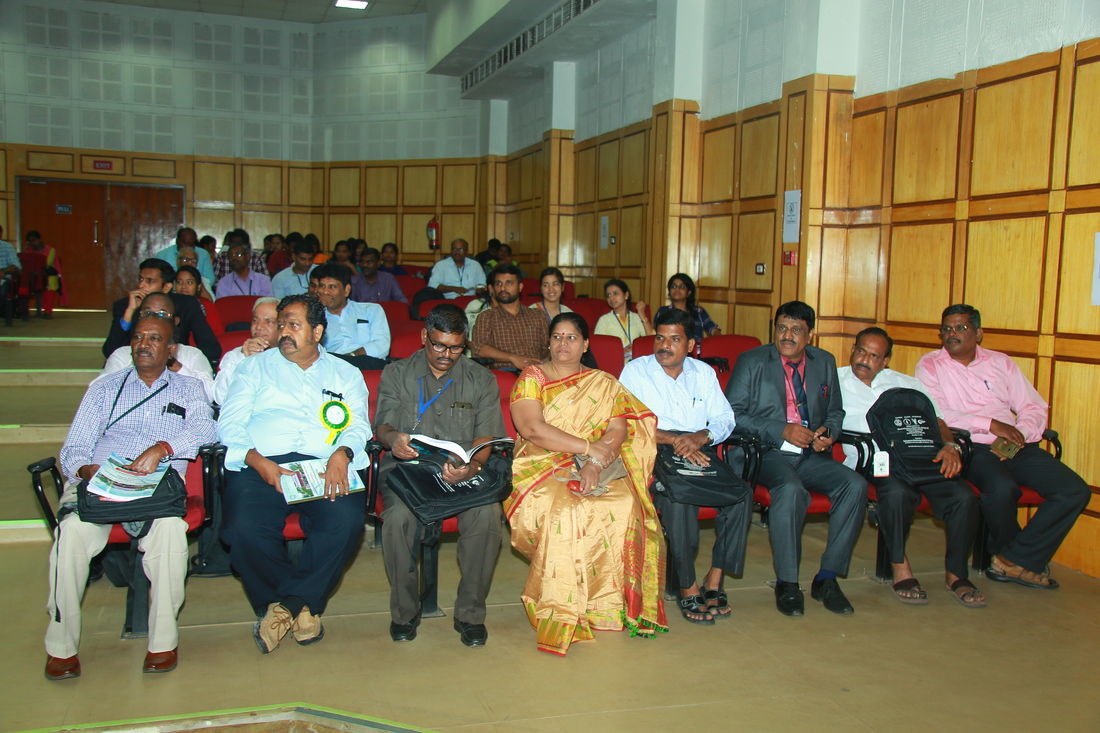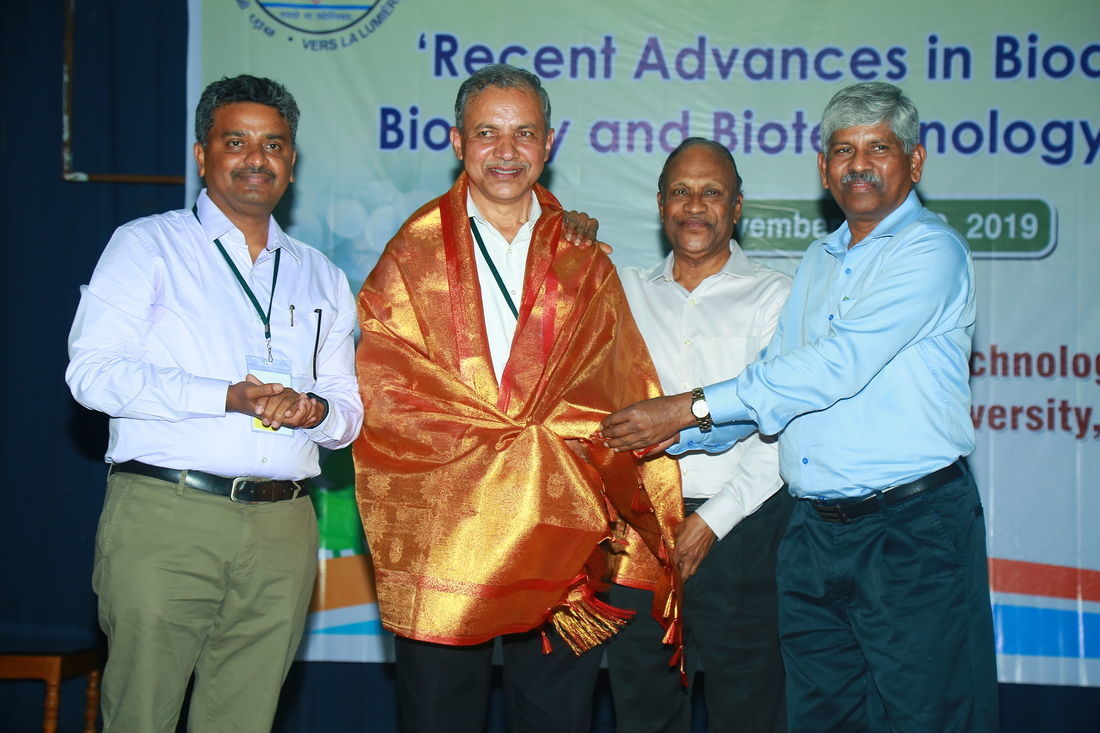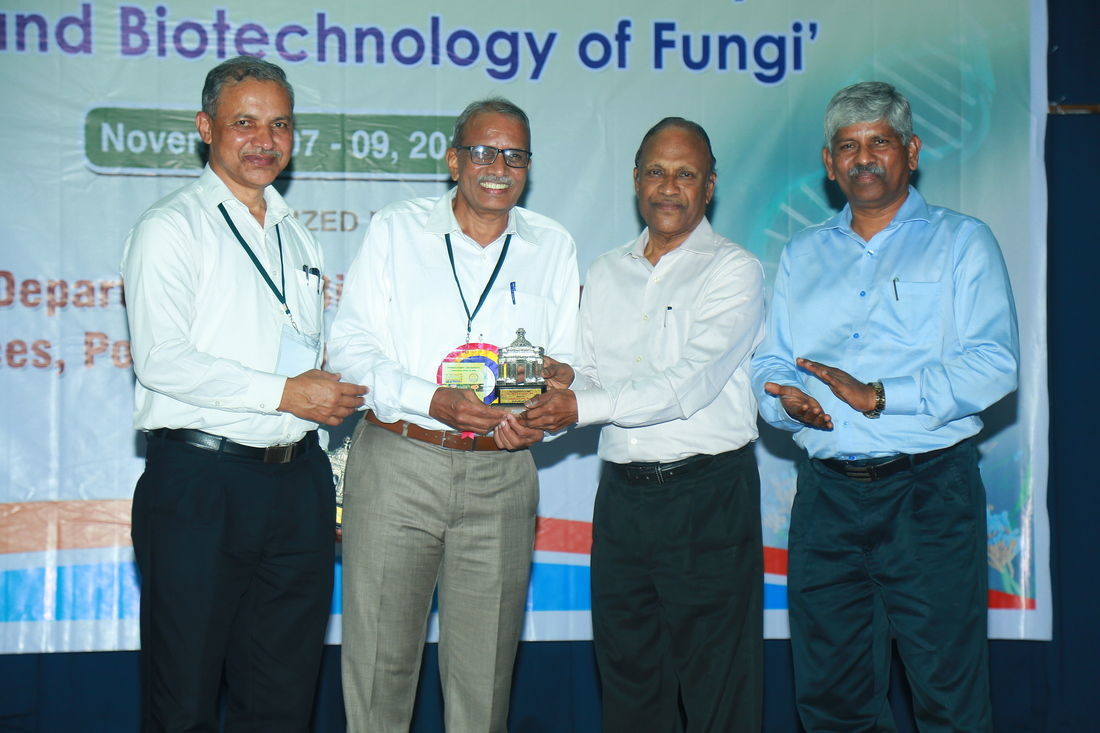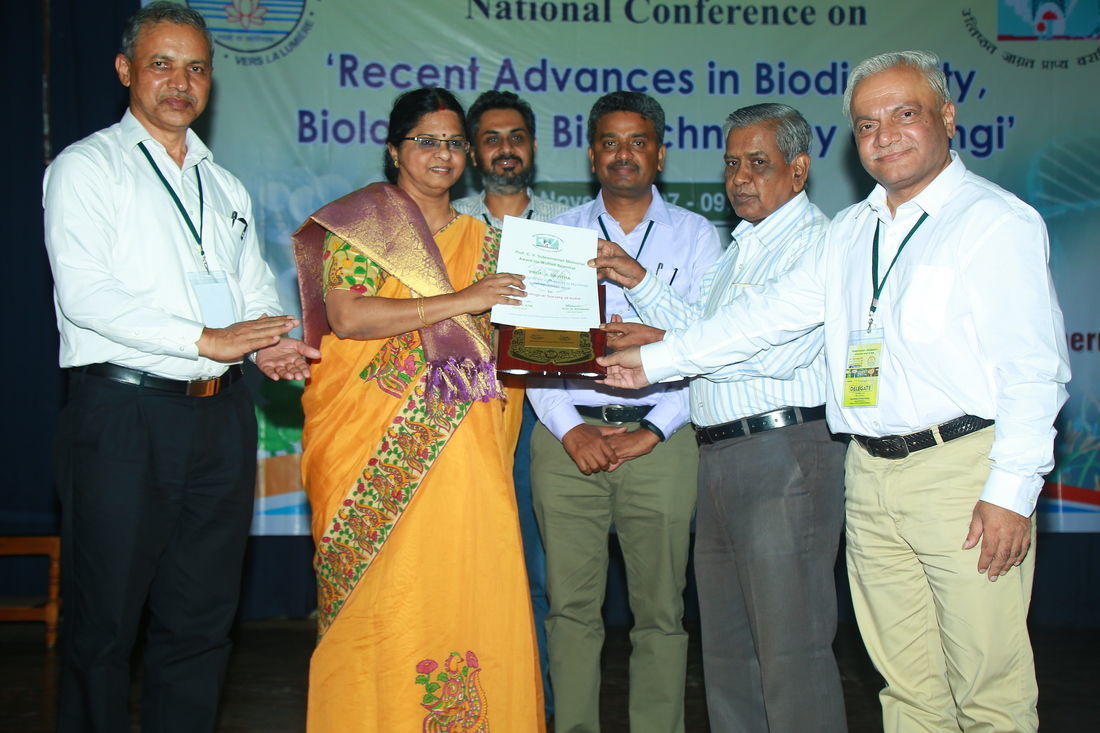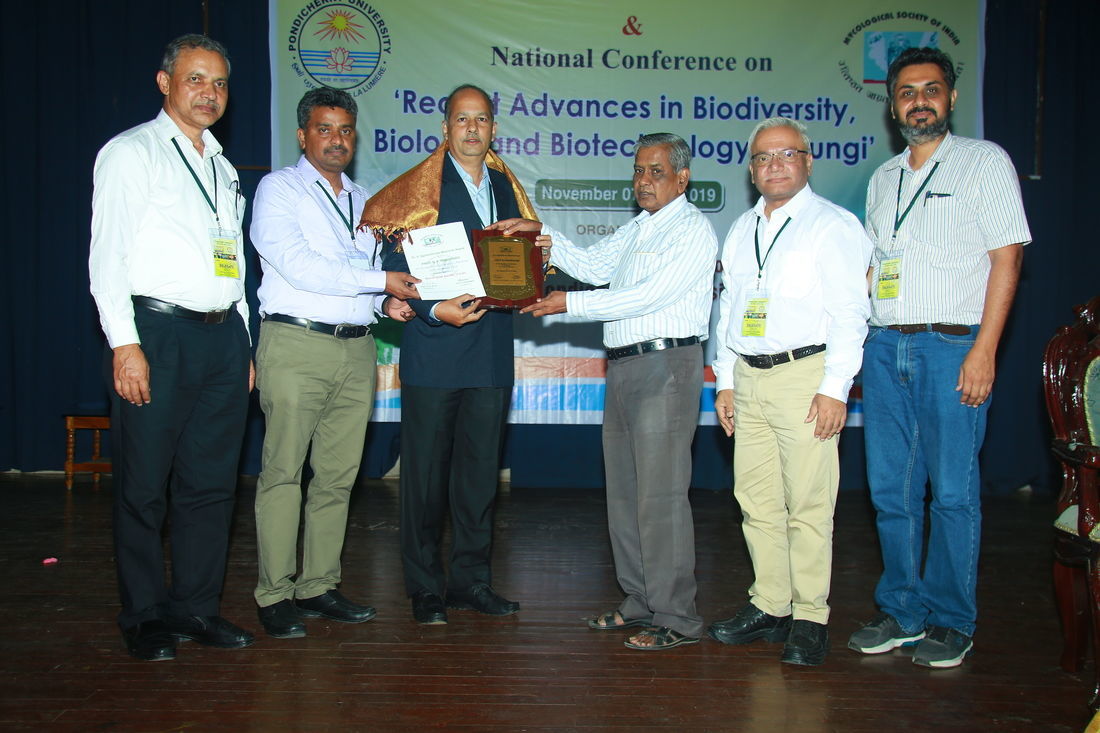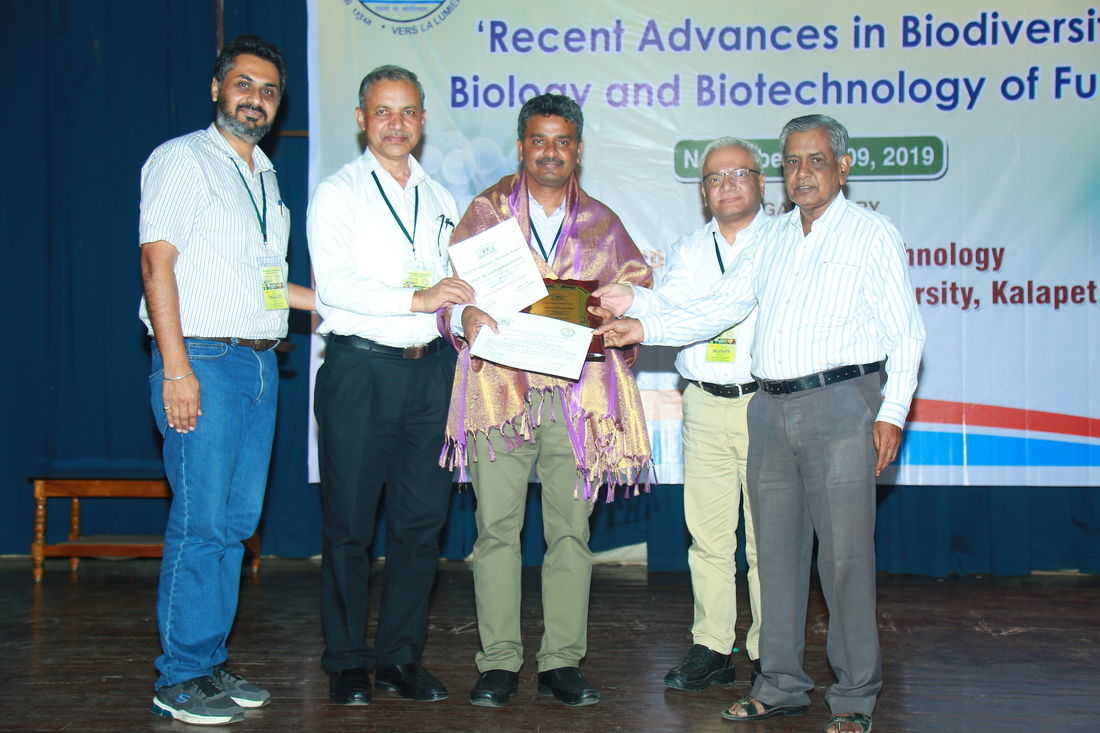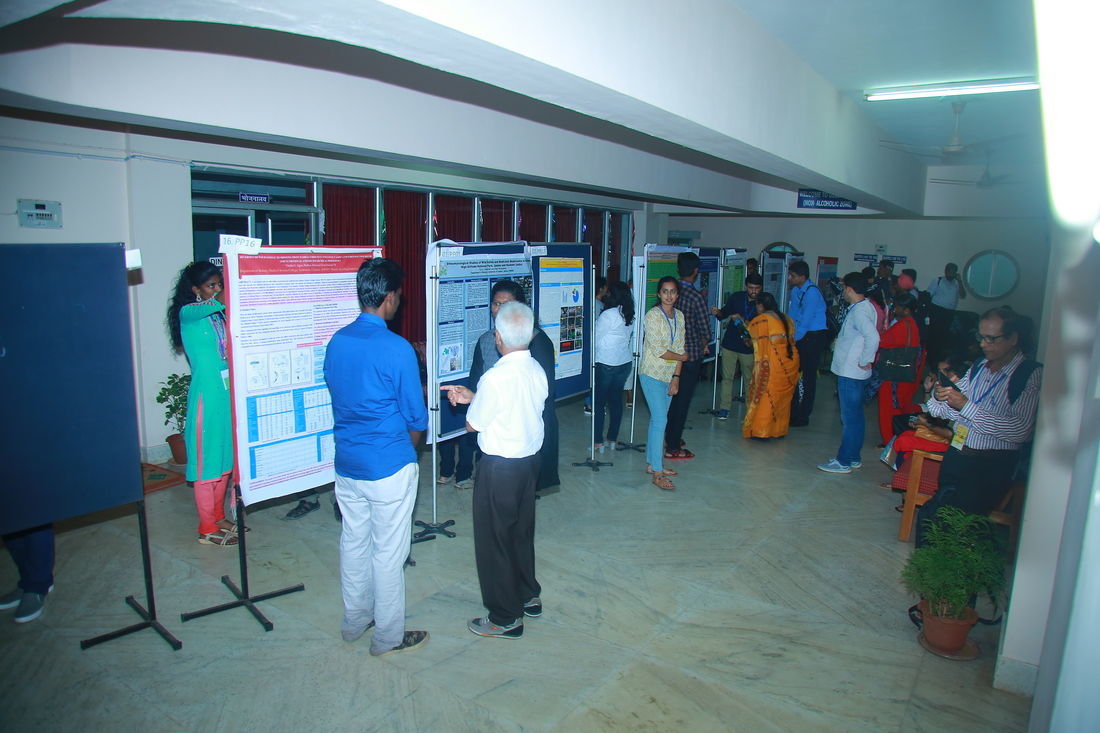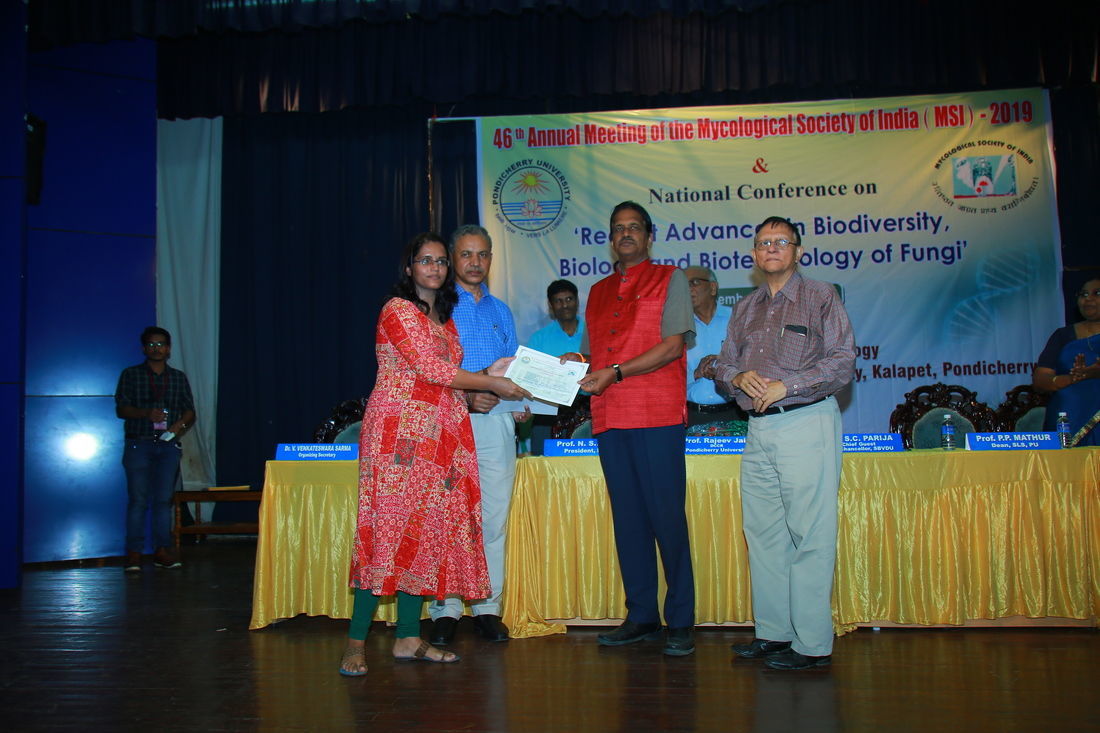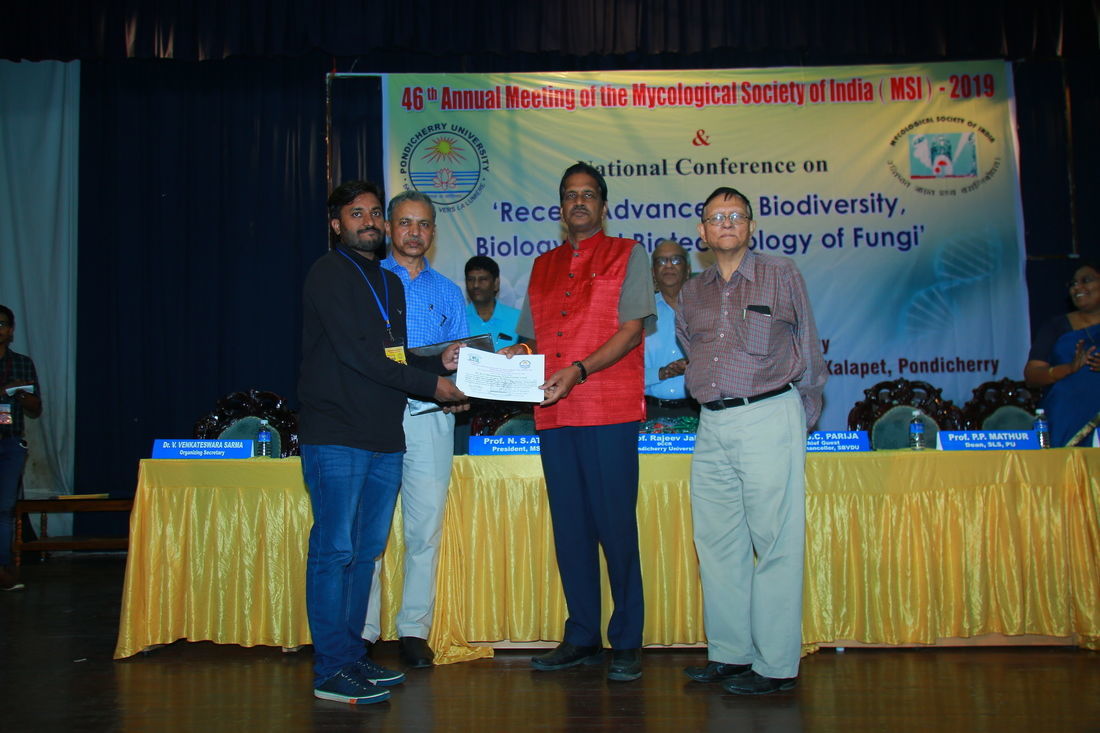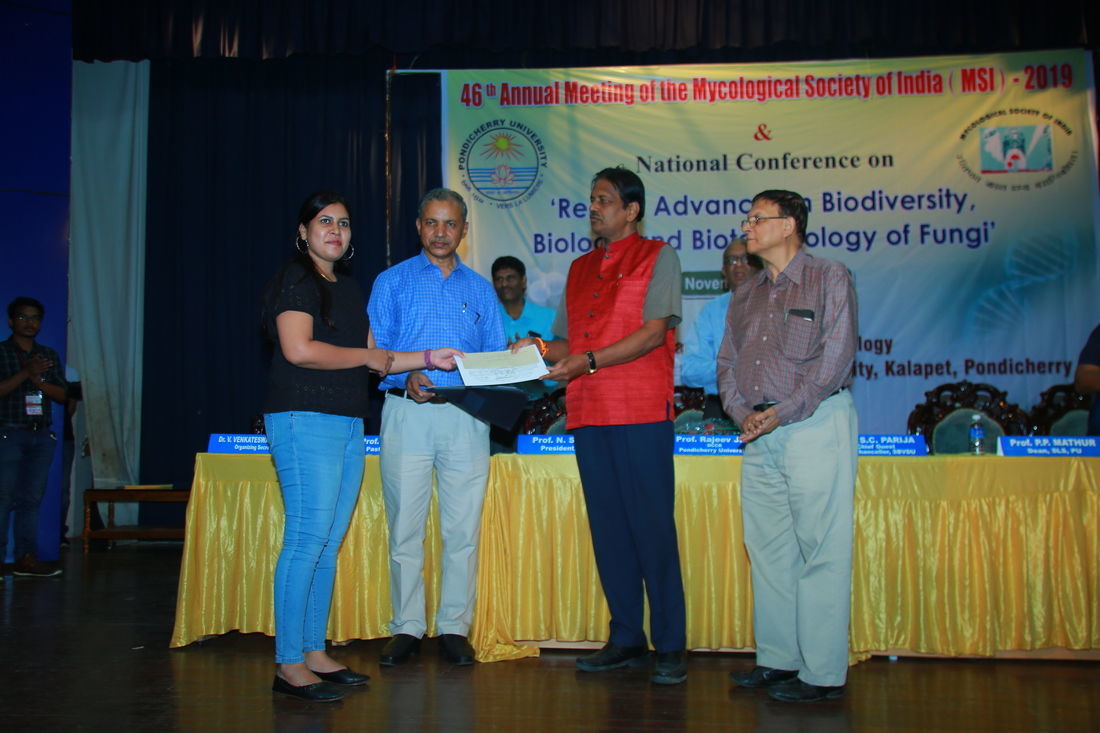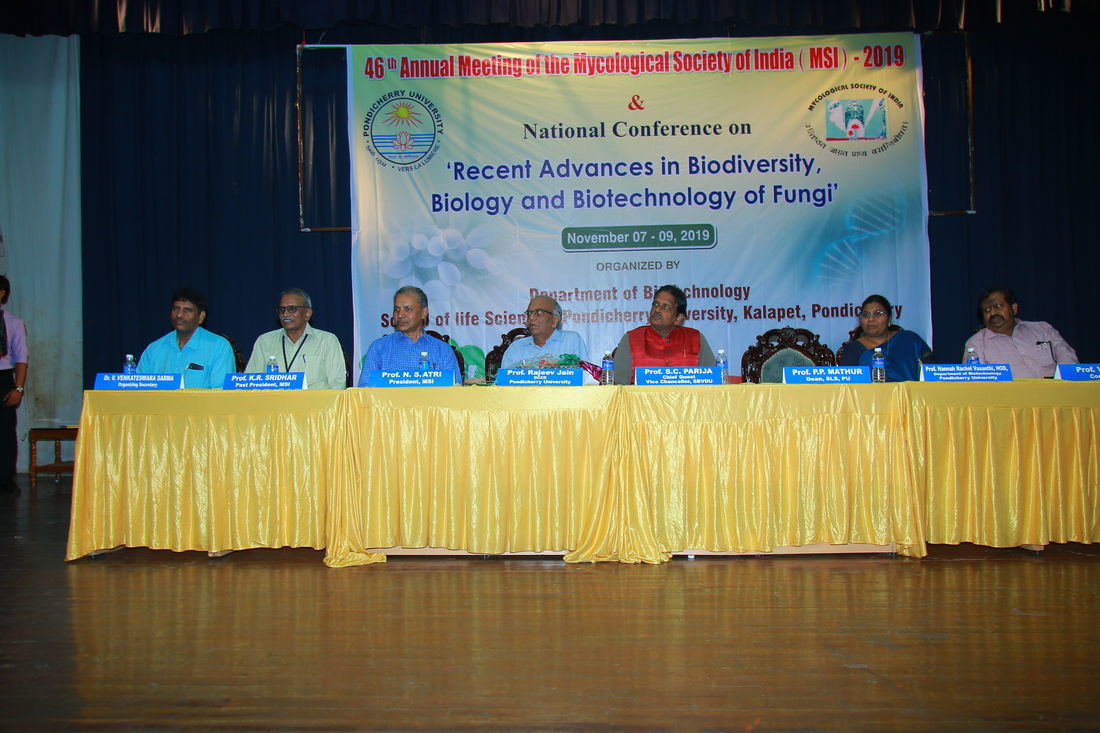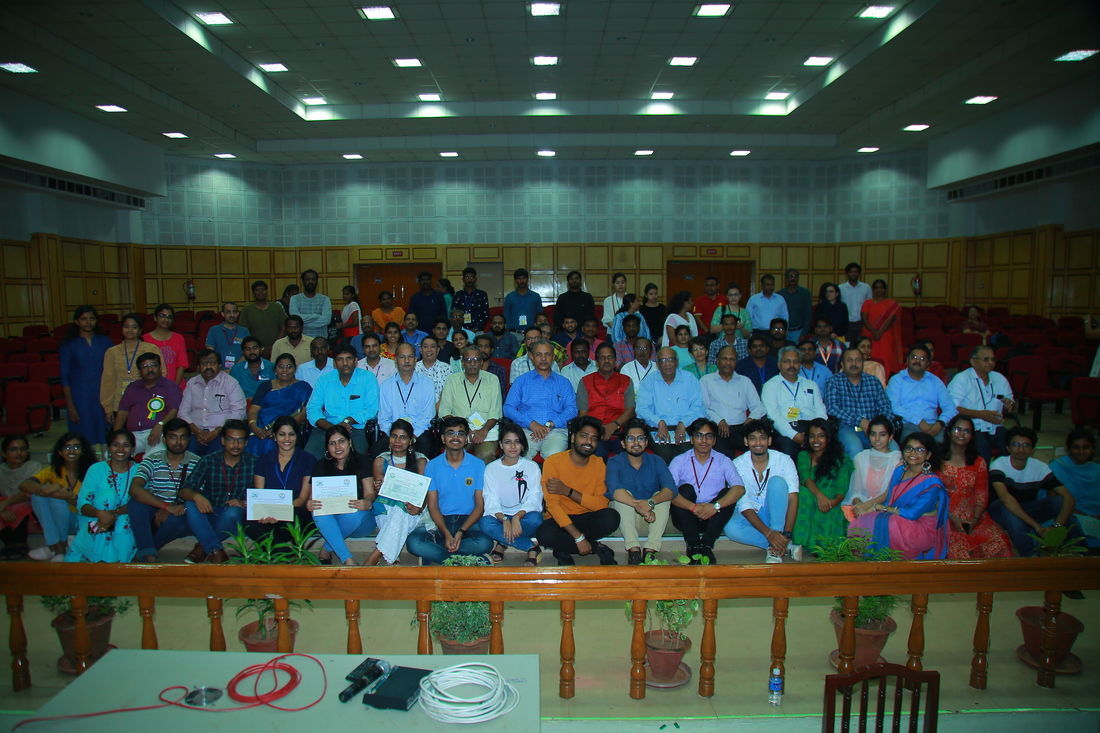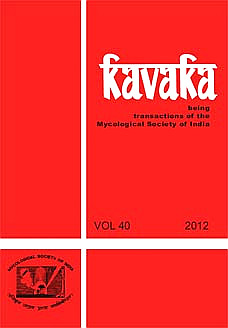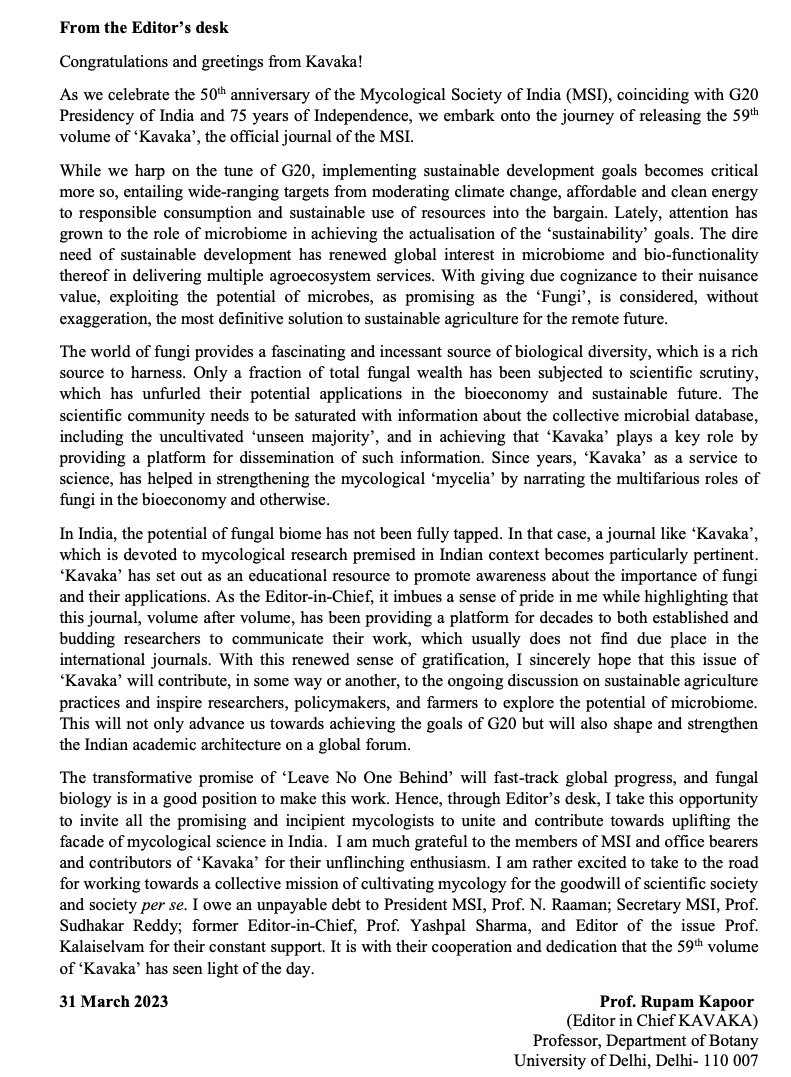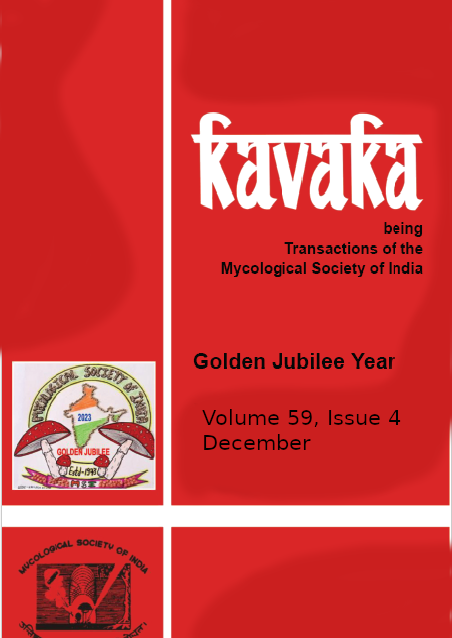From the Editor’s Desk
Dear readers,
Welcome to the second issue of 59th volume of KAVAKA through which we envision to delve into the fascinating world of Fungi. Through this issue the endeavour is to highlight the importance of exploring fungal diversity, documenting its wonders, and insinuating how mycology can generate incredible avenues for scientific advancement and human well-being. Fungi, the treasure trove, occupy prime place in the biological world in their pristine form. India is a cradle for a galaxy of fungi, however only a fraction of its total fungal wealth has been subjected to scientific scrutiny. Fungi form a kingdom of their own, separate from plants and animals, with an estimated diversity of millions of species. Yet, we have only scratched the surface of understanding their true potential. It’s about time to unveil nature's hidden secrets and appreciate the intricate web of life that fungi weave. Attributable to the sheer number of fungal species, cataloguing and documentation of their diversity is a challenging task. In light of that, it is imperative that we invest in comprehensive fungal surveys, DNA sequencing, and taxonomic studies to unravel the hidden treasures of the fungal kingdom before they become unsalvageable. Exploring fungal diversity and documentation thereof are extremely crucial to pave towards further evaluation of their potential in pharmaceuticals, nutraceuticals, and as biofertilizers. By studying the vast array of fungal species, we can better comprehend the intricate mechanisms that drive our ecosystems, leading to more sustainable practices and conservation efforts. Furthermore, by expanding our knowledge of fungal diversity and bioprospecting them, we can discover new bioactive compounds that may revolutionize the treatment of diseases and improve human health. From the humble mushroom farm to the cutting-edge laboratories of pharmaceutical companies, fungi are proving to be a game-changer across industries. It is imperative that we recognize and capitalize on the potential of fungi, fostering research, investment, and sustainable practices. By doing so, we can unlock a myriad of opportunities, driving economic growth, advancing healthcare, and enhancing the quality of our lives while nurturing the planet's rich fungal biodiversity. It presents opportunities to engage with scientists, enthusiasts, and professionals alike, fostering collaboration and knowledge sharing. Through mycology societies, research institutions, and community-driven initiatives, we can build a collective effort to unravel the mysteries of fungi, harness their potential for the greater good, and ensure fair recognition and protection of the efforts and innovations derived from fungi by safeguarding intellectual property. There is no price tag for curiosity, and it is mankind’s yearning for the ‘unknown’ that has made our species excel. In conclusion, dear readers, I would like to emphasize that it is our moral duty as mycologists to showcase the valuable facet of fungi. By dispelling misconceptions, highlighting ecological contributions, unveiling economic and industrial benefits, and educating future generations, mycologists can play a vital role in transforming the perception of fungi. Embracing this responsibility can lead to a greater understanding and appreciation of fungi, paving the way for sustainable utilization, conservation, and the realization of the tremendous benefits that fungi offer to society and the environment. With that commitment, let us embark on a journey to explore fungal diversity with curiosity and reverence. Together, through this issue of KAVAKA, let us celebrate the wonders of the fungal kingdom and protect its rich heritage for generations to come. The present issue of KAVAKA stands as a testament to the collective commitment of the members of MSI to academic excellence and the pursuit of knowledge. My deepest appreciation is reserved for the Editor of this issue, Dr. Naveen Kango, for his meticulous attention to detail, unwavering commitment to excellence, and the countless hours devoted to ensuring the quality of the published articles. Undoubtedly, it is through the collaborative efforts of the entire KAVAKA community that we continue to thrive and make a meaningful impact in the scholarly landscape. Wishing you an enlightening and inspiring reading experience.
June 30, 2023
Prof. Rupam Kapoor
(Editor in Chief KAVAKA)
Professor, Department of Botany
University of Delhi, Delhi - 110 007
Title  |
Content |
Editorial Board  |
KAVAKA 59(2): 01-25 (2023) DOI: 10.36460/Kavaka/59/2/2023/01-25 
Diversity and Industrial Applications of Fungal Pectinases
Asheesh Kumar Mishra1, Kaushal Kishor Mishra1, Chaudhary Shalu Singh2, Manyata Sharma1, Deepak Chand Sharma1*
1*Department of Microbiology, DSMNR University, Lucknow - 226 017, Uttar Pradesh, India.
2Research Scientific Officer, Mohan Meakin Limited, Mohan Nagar, Ghaziabad - 201 007, Uttar Pradesh, India.
*Department of Microbiology, DSMNR University, Lucknow - 226 017, Uttar Pradesh, India.
*Corresponding Author Email: This email address is being protected from spambots. You need JavaScript enabled to view it.
(Submitted on May 31, 2023; Accepted on June 04, 2023)
Abstract
Pectins play a vital role in maintaining the structure and firmness of plant tissues, providing resilience to cell walls and protecting plants from drought and wilting. Fungi possess a diverse group of extracellular pectinolytic enzymes, known as pectinases, which serve as valuable tools for infecting their host plants or drawing energy by degrading plant materials. Pectinases specifically target and break down pectin and pectic substances into monomers with diverse modes of action. In food processing, winemaking, paper, tea, coffee and textile industries, pectinases are widely recognized as the commonly used enzymes. They are employed in developing new products, enhancing production of the existing products, physical, chemical and sensory properties and increasing overall yield. This review aims at targeting the biochemical characteristics of fungal pectinases, with specific focus on their relevance in different industries. Additionally, it provides a comprehensive overview of the applications of fungal pectinases in various industrial processes.
Keywords: Pectinases, Polygalacturonase, Fungal pectinases, Alkaline Pectinases, Acidic Pectinases, Fiber retting,
KAVAKA 59(2): 26-39 (2023) DOI: 10.36460/Kavaka/59/2/2023/26-39 
A Commercial-Scale, Circular-Economical Bio-Refinery Model for Sustainable Yields of Mushrooms, Cellulase-Complex, Bio-Priming Agents, Bio-Ethanol, and Bio-Fertilizer
Navnit Kumar Ramamoorthy1, Vinoth Vengadesan2, Revanth Babu Pallam1, Vignesh Krishnasamy1, Sudha Rani Sadras2, Sahadevan Renganathan3, Venkateswara Sarma Vemuri1,*
1Fungal Biotechnology Laboratory, Department of Biotechnology, Pondicherry University, Kalapet, Pondicherry - 605 014, India.
2Department of Biochemistry and Molecular Biology, Pondicherry University, Kalapet, Pondicherry - 605 014, India.
3Biofuel Laboratory, Centre for Biotechnology, Anna University, Chennai - 600 025, India.
*Corresponding author Email: This email address is being protected from spambots. You need JavaScript enabled to view it.
(Submitted on June 01, 2023; Accepted on June 04, 2023)
ABSTRACT
In the present study, 126-day-long commercial-scale demonstration of a circular-economical bio-refinery, its sequential operational stages, employing 96 kg of a substrate mixture comprising urban vegetative waste and e-commerce packaging waste, resulted in yields of: 36 kg of mushrooms; 124,800 IU of exoglucanase; 1.2 x 1013 seed bio-priming agents; 1.08 L of bio-ethanol; 6.76 kg of bio-compost/bio-fertilizer. The first stage of oyster mushroom cultivation resulted in degradations of 73.8% lignin and 88.2% hemicellulose. Remnant biomass from the mushroom cultivation phase was subjected to solid-state fermentation (SSF) employing Trichoderma koningii Oudemans Tk-7 for the production of in-house cellulases. Post SSF, the harvested spores of T. koningii, when used as a seed bio-priming agent, resulted in a 26% average increase in the percentages of germination. Remnant biomass from SSF, after an in-house cellulase-based saccharification and fermentation, resulted in a bio-ethanol yield of 0.43 g/g of glucose. The unsaccharified biomass fraction, when subjected to cow dung-based aerobic windrow composting, resulted in a bio-compost, which exhibited a 242.5% increase in seed germination indices. Significant variables related to bio-process and substrate utilization have been analysed. With a ~70% process-related profit margin, the proposed approach could prove to be a promising agripreneurial proposition.
Keywords: Bio-compost; Biomass pre-treatment; Bio-refinery; Germination indices; Saccharification; Seed bio-priming.
KAVAKA 59(2): 40-48 (2023) DOI: 10.36460/Kavaka/59/2/2023/40-48
Production of Extracellular Endo-inulinase from Fusarium oxysporum Using Garlic Extract as Substrate for Generation of Fructooligosccharides (FOS)
Hemant Kumar Rawat, Sumat Chand Jain, Naveen Kango*
Enzyme and Molecular Catalysis Laboratory, Department of Microbiology, Dr. Harisingh Gour Vishwavidyalaya, Sagar, Madhya Pradesh - 470 003, India.
*Corresponding author Email: This email address is being protected from spambots. You need JavaScript enabled to view it.
(Submitted on May 17, 2023; Accepted on June 04, 2023)
ABSTRACT
Various carbon sources were evaluated for production of inulinase by Fusarium oxysporum RS-115. Highest inulinase activity was observed with garlic extract (15.24 nkat/ml) as carbon source. The enzyme activity was 2.8 folds higher than that observed in media containing pure chicory inulin (5.39 nkat/ml). The Fungus showed good growth on a simple medium containing garlic extract (20% w/v) and yeast extract (2%w/v) as carbon and nitrogen source respectively, in 120 h at 30°C and 150 rpm. Among various protein sources tested, yeast extract was found to be the best source followed by peptone (12.15 nkat/ml) and beef extract (9.84 nkat/ml). The enzyme was optimally active at pH (5.0) and 50°C. All metal salts except MnSO4, MgSO4 and FeCl3 were not well tolerated and did adversely affect inulinase activity. Inulinase activity was found reduced significantly in presence of EDTA and PMSF whereas the activity of inulinase was inhibited by pCMB. TLC and HPLC analysis of end products revealed that inulinase hydrolyzed inulin exclusively into fructose and fructooligosacharides. Results suggest that the garlic induced endoinulinase synthesis in F. oxysporum RS-115 and can be utilized as a potential substrate for inulinase production.
Key words: Inulinase, Allium sativum, fructoologosaccharides, Fusarium oxysporum.
KAVAKA 59(2): 49-51 (2023) DOI: 10.36460/Kavaka/59/2/2023/49-51
Evaluation of Ready-Mix Fungicides Against Okra Root Rot [Macrophomina phaseolina (Tassi) Goid.] Under In Vitro Condition
Hemangi J Kapadiya , J.R. Talaviya*, K.D. Shah, R.H. Ghadiya
Department of Plant Pathology, College of Agriculture, Junagadh Agricultural University, Junagadh - 360 201, India.
*Corresponding author Email: This email address is being protected from spambots. You need JavaScript enabled to view it.
(Submitted on February 07, 2023; Accepted on June 04, 2023)
ABSTRACT
Okra [Abelmoschus esculentus (L.) Moench] is the only vegetable crop of significance in the Malvaceae family and is very popular in the Indo-Pak subcontinent. In India, it ranks first in its consumption. The crop was found to suffer from stem and root rot disease in severe form in many regions of Gujarat state during Kharif, 2021. So, for its management ready mix fungicides evaluated under in vitro condition, among the different tested fungicides carboxin 37.5% + thiram 37.5% found effective treatment with 93.40 per cent mycelial growth at 1000 ppm concentration and it found statistically at par with carbendazim 25%+ mancozeb 50% gave 92.92 per cent mycelial growth inhibition at 1000 ppm. Next best was carboxin 37.5% + thiram 37.5%with 90.66 per cent mycelial growth inhibition at 500 ppm and it found statistically at par with metiram 55% + pyraclostrobin 5% gave 89.51 per cent mycelial growth inhibition at 1000 ppm.
Key words: Okra, Root rot, Ready mix fungicide, Macrophomina phaseolina
KAVAKA 59(2): 52-64 (2023) DOI: 10.36460/Kavaka/59/2/2023/52-64
Arbuscular Mycorrhizal Fungi as Potential Agents in Augmenting Growth and Stress Tolerance in Plants
Charu Kalra1, Sargam Bharti2, Sonal Bhatnagar3, Bhoopander Giri4, Reeta Kumari*1
1Department of Botany, Deen Dayal Upadhyaya College, University of Delhi, Delhi - 110 078, India.
2Department of Biotechnology, School of Chemical and Life Science, Jamia Hamdard, Delhi - 110 062, India.
3Department of Environmental Studies, Shyama Prasad Mukherji College for Women, University of Delhi - 110 026, India.
4Department of Botany, Swami Shraddhanand College, University of Delhi, Delhi - 110 036, India.
*Corresponding author Email: This email address is being protected from spambots. You need JavaScript enabled to view it.
(Submitted on May 29, 2023; Accepted on June 27, 2023)
Abstract
Plants encounter a variety of difficulties when they are growing, many of which are exacerbated by increasing anthropogenic activities. Among such challenges, heavy metal accumulation in plants has raised serious concerns for the ecosystem and human health. Phytoremediation has emerged as a viable strategy to restore soil fertility without requiring expensive processes in order to solve the issue of heavy metal toxicity in an environmentally sustainable manner. However, several problems that lead to low plant growth rates due to metal toxicity in polluted soil limit the effectiveness of this technique. Arbuscular mycorrhizal fungi (AMF) effectively reduce heavy metal phytotoxicity and play a pivotal role in phytoremediation by augmenting plants’ tolerance. AMF contributes to the successful remediation of contaminated sites, acts as a biofertilizer, promotes plant growth, enhances yield, and improves overall plant quality. This review summarized the potential of AMF in promoting plant development and addressing various challenges faced by plants exposed to heavy metals. It discussed the different roles that AMFs play and the mechanisms through which they contribute to phytoremediation. By understanding the beneficial effects of AMF, we can harness their potential to mitigate the detrimental impacts of anthropogenic activities and ensure the sustainable management of ecosystems.
Keywords: Mycorrhiza, Phytoremediation, Nutrient exchange, Soil fertility
KAVAKA 59(2): 65-74 (2023) DOI: 10.36460/Kavaka/59/2/2023/65-74 
Screening of Muskmelon (Cucumis melo L.) Germplasm Against Fusarium wilt (Fusarium oxysporum f. sp. melonis) and its Utilization in Hybrid Development
Sayeed AH Patel*1, Ajmer Singh Dhatt1, Sat Pal Sharma1, Hament Thakur2
1Department of Vegetable Science, Punjab Agricultural University, Ludhiana, Punjab - 144 521, India.
2Regional Research Station-Punjab Agricultural University, Ballowal Saunkhri, SBS Nagar, Punjab - 144 521, India.
*Corresponding author Email: This email address is being protected from spambots. You need JavaScript enabled to view it.
(Submitted on December 13, 2021; Accepted on June 04, 2023)
Abstract
Fusarium wilt is serious disease of muskmelon throughout globe. Fifty accessions of muskmelon and its relatives (Fom differentials, snapmelon and wild melon) were used for hybrid making in half diallel manner. Fifty accessions were screened at expanded cotyledonary stage after inoculation with local Fom isolate under artificial conditions. Based on disease severity, eight accessions were found highly resistant (0.00-21.67%) and three moderately resistant (28.33-36.67%).The Fom resistant differentials; Hemed (AUDPC 850; severity 91.67%) and F-65 (AUDPC 983.33; severity 88.33%) showed susceptible reaction, which signifies the presence of new Fom pathogenic race. Further, eight highly resistant and two susceptible genotypes were crossed to generate 45 hybrids. These hybrids were screened under wilt sick plot for two consecutive years for fusarium wilt disease incidence and other important yield traits. Out of 45 hybrids, KP4HM-15 × MM-202, KP4HM-15 × Kajri Sel. 1, MM-314 × KP4HM-15, and Kajri Sel. 1 × MM-202 were best performing resistant hybrids for yield and quality traits with least incidence of fusarium wilt disease. Based on the results, we concluded that, novel putative resistant genes prevail in Indian germplasm which can further be mapped for the identification of linked markers to strengthen the hybrid development program against newly evolving pathogenic races in muskmelon and cantaloupe.
Keywords: Fusarium wilt, Fusarium oxysporum f.sp. melonis, Hybrid development, F-65, Hemed, Snapmelon
KAVAKA 59(2): 75-81 (2023) DOI: 10.36460/Kavaka/59/2/2023/75-81 
Agro Composite Waste: A Novel and Economical Substrate for the Production of Edible Mushroom
Veeresh Nandikolmath1*, S. Shankara Somashetty1, Bhagyashree H2, Priya M2, Varsha C2
1 Stroma Biotechnologies Private Limited, Bengaluru - 560 022, Karnataka, India.
2Department of Microbiology, Nrupathunga University, Bengaluru - 560 001, Karnataka, India.
*Corresponding author Email: This email address is being protected from spambots. You need JavaScript enabled to view it.
(Submitted on February 02, 2023; Accepted on June 23, 2023)
ABSTRACT
Mushrooms are edible macrofungi grown in many countries using various agricultural wastes. Mushrooms transform lignocellulosic waste and residues into valuable bioactive compound which are very important in the food and pharma industry. The purpose of this study was to grow Calocybe indica on 5 different substrates (Type A, Type B, Type C, Type D, and Type E) prepared from agro-waste such as rice bran, wheat bran, cow dung, rice straw, and leftover orange residue after essential oil extraction. Type-C substrate showed the highest biological efficiency, giving an optimal mushroom yield of 16.049% w/w and also exhibited the highest nutritional value as follows; the highest phenol content was observed in the Type-D category and the lowest in Type-C category, where mushroom showed 2.11 GAE/100g phenol content. The Type-B category mushrooms show the highest carbohydrates, energy, and ah contents compared to other types category mushrooms. The Type-E category mushroom shows highest protein and fibre content. The Type-D category mushroom contains highest Phenol and moisture content. The Type-C category mushroom contain normal and low nutritional values compared to another category mushroom. Therefore, black soil in a trace amount along with orange residue would enhance the biological efficiency and nutritional profile of Calocybe indica.
Keywords: Mushroom, Nutritional content, Spawn, Substrate, Calocybe indica, Biological efficiency.
KAVAKA 59(2): 82-84 (2023) DOI: 10.36460/Kavaka/59/2/2023/82- 84
84
First Report of Golovinomyces sp. (Euoidium sp.) Causing Powdery Mildew on Aster amellus L. in India
Thite S.V.1*, Hande P.R.2, Pise N.M.3, Chavan, C.D.4
1, 3, Karmaveer Bhaurao Patil Mahavidyalaya, Pandharpur, Solapur - 413 305, Maharashtra, India.
2 Baburaoji Gholap College, Sangvi, Pune - 411 027, Maharashtra, India.
4Department of Botany, Shivaji University, Kolhapur - 416 004, Maharashtra, India.
*Corresponding author Email: This email address is being protected from spambots. You need JavaScript enabled to view it.
(Submitted on February 20, 2023; Accepted on June 13, 2023)
ABSTRACT
In November 2020, leaves of Aster amellus with typical symptoms of powdery mildew were collected in the Botanical Garden of Yashavantrao Chavan Institute of Science, Satara, Maharashtra, India. Based on its morphological characters, the pathogen was identified as Golovinomyces sp. (Euoidium sp.). This is the first report of powdery mildew on A. amellus in India.
Key words: Aster amellus, Asteraceae, Euoidium sp., Golovinomyces sp.
KAVAKA 59(2): 85-91 (2023) DOI: 10.36460/Kavaka/59/2/2023/85-91 
Developmental Studies of Indian Laboulbeniales - Dimeromyces anisolabis (Ascomycota, Laboulbeniomycetes)
Anita Narang1, Anupama Shukla1*, Surinder Kaur2
1Department of Botany, Acharya Narendra Dev College, University of Delhi, New Delhi - 110 019, India.
2Department of Botany, S.G.T.B. Khalsa College, University of Delhi, Delhi - 110 007, India.
*Corresponding author’s Email: This email address is being protected from spambots. You need JavaScript enabled to view it.
(Submitted on May 29, 2023; Accepted on June 27, 2023)
Abstract
The morphological development of the thallus of Dimeromyces anisolabis Thaxter is described and illustrated. It is a dioecious genus, collected from the common earwigs. The developmental stages of both the male and female thalli have been described. Supporting figures are camera lucida drawings and photographic illustrations.
Key words: Ascomycota, Laboulbeniomycetes, Perithecium, Antheridi
KAVAKA 59(2): 92-103 (2023) DOI: 10.36460/Kavaka/59/2/2023/92-103 
Diversity of Agaricales from Kolhapur District, Maharashtra, India-I
Anjali Rajendra Patil and Sushant Ishwar Bornak*
Department of Botany, Rajaram College, Kolhapur - 416 004, Maharashtra, India.
*Corresponding author Email: This email address is being protected from spambots. You need JavaScript enabled to view it.
(Submitted on March 29, 2023; Accepted on June 27, 2023)
Abstract
Order Agaricales is dominated by gilled mushrooms and is the most diverse group distributed worldwide. Many gilled mushrooms are best known for their nutraceutical and pharmaceutical importance. Kolhapur is one of the most developed districts of Maharashtra and is southernmost tip of the state. With an area of 8,074 km2, the district has Sahyadri mountain ranges on the western side, while the remaining region is a part of Deccan Plateau and rain shadow zone on the east. As a part of Western Ghats, the district has an ample floristic and fungal diversity. In the present work, 13 species of Agaricales, viz., Agaricus xanthoderma, Chlorophyllum molybdites, Clarkeinda trachodes, Coprinellus disseminatus, Cystoagaricus trisulphuratus, Hygrocybe astatogala, Hypholoma subviride, Leucoagaricus americanus, Leucoagaricus rubrotinctus, Leucocoprinus birnbaumii, Marasmius pellucidus, Pleurotus djamor, and Termitomyces clypeatus have been described, of which Clarkeinda trachodes, Hypholoma subviride, and Marasmius pellucidus have been reported for the first time from Maharashtra state.
Keywords: Diversity, Agaricales, Mushrooms, Maharashtra, Western Ghats, Taxonomy
Instructions to Authors 
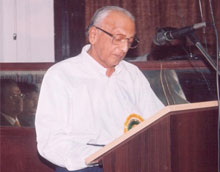 Mycological Society of India is a scientific body constituted for the advancement of subject of mycology, the study of fungi including mushrooms, molds, truffles, yeasts, lichens, plant pathogens, and medically important fungi. The Society was founded in January 1973 by a team of mycologists lead by Professor C.V. Subramanian, former Director, C.A.S. in Botany, University of Madras, Chennai, India and Former President of International Mycological Association, with a view to bring together mycologists of the country and with the broad objectives of promoting development of Mycology in India in all its aspects and in the widest perspective.
Mycological Society of India is a scientific body constituted for the advancement of subject of mycology, the study of fungi including mushrooms, molds, truffles, yeasts, lichens, plant pathogens, and medically important fungi. The Society was founded in January 1973 by a team of mycologists lead by Professor C.V. Subramanian, former Director, C.A.S. in Botany, University of Madras, Chennai, India and Former President of International Mycological Association, with a view to bring together mycologists of the country and with the broad objectives of promoting development of Mycology in India in all its aspects and in the widest perspective.
